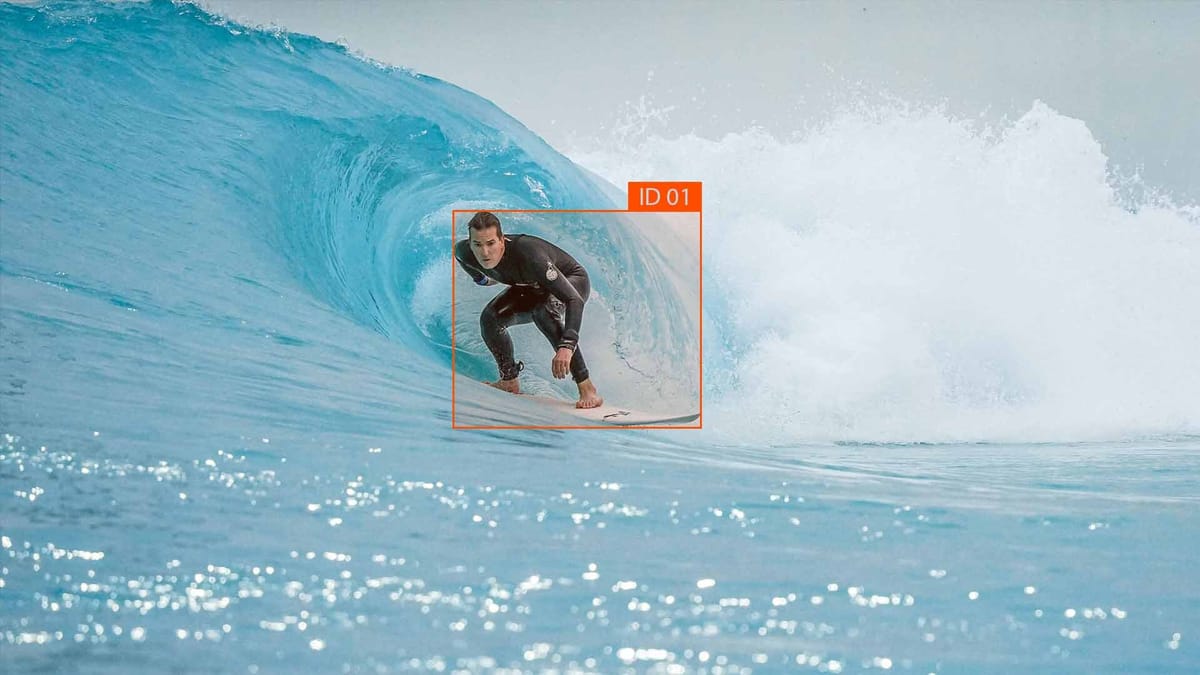Annotation-Driven Hyperparameter Tuning: Adapting Models to Data Quality

In machine learning model development, hyperparameter tuning is key in achieving optimal performance, often distinguishing between a promising prototype and a production-ready solution. While traditional tuning methods focus on model architecture, optimization strategies, or training schedules, they rarely account for variations in data quality. This shortcoming becomes especially critical when working with annotated datasets. Annotation-based hyperparameter tuning addresses this gap by adapting model configurations based on the nature, consistency, and reliability of the labels provided.
The idea behind annotation-based tuning recognizes that data is not homogeneous and that models must be sensitive to the imperfections in real-world datasets. Rather than treating all annotations as equally reliable, this approach introduces a dynamic way of weighting the impact of different data points based on metadata, annotator consistency, or confidence scores. In this way, hyperparameters such as learning rate, regularization strength, or early stopping criteria can be adjusted to reflect the integrity of the data.
Key Takeaways
- Pre-training configurations directly impact model accuracy and stability.
- Fixed settings like regularization strength prevent data leakage risks.
- Annotation alignment ensures models adapt to dataset nuances.
- Optimized configurations save computational resources and time.
Overview of Model Optimization
Model optimization in machine learning refers to tuning a model's parameters and configurations to improve its performance on a given task. This usually involves choosing the best combination of hyperparameters, architectures, and learning strategies to minimize errors and improve generalization. Optimization can be divided into two broad areas: training optimization, which focuses on reducing a loss function during training, and hyperparameter tuning, which looks for the best settings for parameters not learned directly from the data. Methods range from traditional methods such as grid and random search to more advanced approaches such as Bayesian optimization, gradient-based tuning, and evolutionary algorithms.
Optimization often begins with selecting an appropriate loss function that guides the model toward the desired outcome, penalizing incorrect predictions. Algorithms such as stochastic gradient descent (SGD) or variants are then used to iteratively update the model weights in response to the computed losses. Each update aims to reduce the losses by moving the model parameters in the direction that most improves performance based on the gradient of the loss function. Incorrectly chosen hyperparameters can lead to slow convergence and over- or under-tuning, emphasizing the importance of careful tuning and monitoring during training.
Why Data Quality Matters
High-quality data provides a solid basis for learning meaningful patterns, while low-quality data introduces noise, ambiguity, and bias that can distort the understanding of the model. If the labels are inconsistent, incorrect, or too sparse, it can be difficult for a model to learn anything useful, no matter how advanced its architecture or optimization process. Several key reasons emphasize the importance of data quality:
- Label accuracy. Inaccurate or inconsistent labels result in confusing signals during training, leading to poor model generalization or learning the wrong relationships.
- Consistency between samples. When annotation rules are applied inconsistently, the dataset becomes internally inconsistent, which can degrade model performance and reliability.
- Coverage and representativeness. If the dataset lacks enough examples of essential cases or classes, the model may develop blind spots and perform poorly in real-world applications.
- Noise and ambiguity. Data with high noise levels, such as fuzzy inputs or conflicting annotations, increase uncertainty and often require more complex models to compensate.
- Problems of bias and fairness. Poor data quality can build social or cultural biases into the model, leading to unfair or harmful results, especially in sensitive areas such as hiring or healthcare.
Understanding Hyperparameters and Model Parameters
Model parameters are internal variables a model learns from training data, such as neural network weights or linear regression coefficients. These parameters are automatically adjusted during training in response to the loss function, which guides the model toward better predictions. On the other hand, hyperparameters are external configurations that are not learned from the data but are set manually before training begins. They control how the model is trained and include values such as learning rate, batch size, number of layers, and regularization strength.
Unlike model parameters optimized during training, hyperparameters must be chosen through experimentation, often involving multiple runs and validation checks. Tuning hyperparameters means finding the best combination that leads to high validation performance without returning to training data. In complex models, even minor adjustments to the hyperparameters can lead to significant changes in behavior, making this process both delicate and efficient. Because of this sensitivity, many modern approaches rely on automated tuning methods to search the hyperparameter space more efficiently than manual trial and error.
Defining Core Concepts
- Model parameters. The model learns these internal variables during training, such as the weights in a neural network. They are automatically adjusted using optimization methods to minimize the model's error on the training data.
- Hyperparameters. These are settings selected before training that control the learning process. Examples include learning rate, number of epochs, batch size, and regularization strength. Unlike model parameters, hyperparameters are not learned from the data.
- Loss function. This mathematical function measures how far the model's predictions deviate from the target values. It provides a signal that guides the optimization of model parameters.
- Optimization algorithm. This refers to minimizing the loss function by updating the model parameters, usually using gradient-based methods such as stochastic gradient descent (SGD) or Adam.
- Training, validation, and testing sets. A dataset is often divided into these three subsets: training data is used to learn the parameters, validation data is used to tune the hyperparameters and test data is used to evaluate the model's final performance.
- Data quality refers to the input data's reliability, consistency, and relevance, especially the labels, in teacher training. High-quality data improves model training, while low-quality data can lead to misleading results or unstable models.
The Role of Data Quality in Model Performance
When the input data is consistent, accurate, and representative, the model can learn meaningful patterns and generalize effectively to new examples. On the contrary, if the data is noisy, mislabeled, biased, or incomplete, the model may develop incorrect associations, leading to poor predictions or erratic behavior.
In supervised learning, where models depend on labeled data, the quality of annotations becomes especially critical. Labels that are ambiguous, inconsistent, or incorrectly assigned introduce uncertainty during training and confuse the optimization process. This often results in lower accuracy, higher variance, and unpredictable generalization behavior. Moreover, the impact of poor data quality may not always be immediately apparent, as it can be masked by high training performance while notwithstanding real-world conditions.
Data quality improves model performance and reduces the need for overly complex architectures or aggressive regularization. Clean, well-labeled datasets allow simpler models to perform well, optimize training processes, and support clearer interpretations of results. In addition, high-quality data increases the reliability of model predictions, which is especially important in sensitive industries such as healthcare, finance, or law.
Pre-processing Techniques and Data Leakage
Pre-processing techniques are essential in preparing raw data for machine learning models by shaping how the model interprets and learns from the input data. These techniques include normalization, standardization, categorical variable coding, missing value handling, and feature selection or extraction. The goal is to transform raw, often untidy, data into a clean, structured format that improves learning. Effective pre-processing helps models converge faster, perform better, and avoid being misled by irrelevant or misleading features.
One of the most critical pitfalls in pre-processing is data leakage. This subtle but harmful problem occurs when information from outside the training dataset, especially from test or validation sets, inadvertently influences the learning process. The leakage gives the model access to information it would not have in a real-world deployment scenario, leading to overly optimistic performance and poor generalization. For example, applying normalization based on the entire dataset rather than calculating statistics from the training set alone can indirectly allow test data to influence the model. Similarly, including future information or using target labels during feature development can contaminate learning.
Fundamentals of Hyperparameter Tuning Techniques
- Search by grid. This method exhaustively searches a given set of hyperparameter values, evaluating every possible combination. Although systematic and straightforward, it can be computationally intensive, especially with many parameters or large datasets.
- Random search. Instead of testing every combination, random search selects a fixed number of hyperparameter combinations from the search space. It is often more efficient than grid search, especially when only a few parameters significantly impact performance.
- Bayesian optimization. This method builds a probabilistic model (usually a Gaussian process) of the objective function and uses it to select promising hyperparameter configurations.
- Cross-validation-based tuning. This involves evaluating combinations of hyperparameters using k-fold cross-validation to ensure that the chosen configuration generalizes well across different subsets of data.
- Manual tuning. Although not systematic, manual tuning based on intuition or previous experience can sometimes be helpful, especially during early experiments or smaller projects.
- Automated machine learning (AutoML). These systems automate tuning hyperparameters, often combining multiple methods (e.g., Bayesian search with early stopping) to find high-performance configurations with minimal human intervention.
Enhancing Neural Network Performance through Hyperparameter Tuning
- Adjusting the learning rate. The learning rate controls the step size when updating weights. Careful adjustment is essential: too high a rate can cause instability, and too low a rate can lead to slow or stuck learning.
- Choosing an optimizer. Different optimizers (e.g., SGD, Adam, RMSprop) affect how gradients are applied. Selecting the right optimizer and adjusting its internal settings (such as momentum or beta values) can affect the convergence speed and final accuracy.
- Batch size settings. The number of samples processed before updating the weights affects the stability of training and generalization. Smaller batches can improve generalization, while larger ones speed learning with more stable gradients.
- Some layers and neurons. The architecture itself, including depth (number of layers) and width (number of units per layer), affects the model's ability to learn complex patterns. Adjusting these values helps to balance expressiveness and overfitting.
- Configuring the dropout rate. Dropout is a regularization method that randomly turns off neurons during training. Adjusting the dropout rate helps to prevent overfitting without reducing the model's learning capacity.
- Learning rate graphs. Dynamically adjusting the learning rate during training (e.g., step fading, exponential fading, cosine annealing) can improve convergence and help avoid local minima.
Summary
Annotation-based hyperparameter tuning focuses on adapting model optimization to the quality of the data, in particular, the reliability and consistency of labels in teacher-trained learning. Instead of treating hyperparameter tuning as a purely technical step, this approach emphasizes the need to match it to the structure and limitations of the dataset. Poor-quality annotations, such as noisy labels or inconsistent tagging, can mislead even well-tuned models, while high-quality data allows for success with more straightforward and more efficient configurations. Adapting hyperparameters to reflect data quality makes models more robust, better at generalization, and less prone to overfitting. This perspective integrates model optimization with data understanding, encouraging more thoughtful, context-sensitive development of machine learning systems.
FAQ
What is annotation-driven hyperparameter tuning?
Annotation-driven hyperparameter tuning adjusts hyperparameters based on the quality and structure of labeled data. It recognizes that data quality, especially in supervised learning, should influence how models are optimized.
Why does data quality affect model performance?
Models learn directly from the given data, so noisy, inconsistent, or incomplete annotations can lead to incorrect or unstable learning. High-quality data provides clearer signals, enabling better generalization and more accurate predictions.
How do model parameters differ from hyperparameters?
Model parameters are learned from the data during training, such as weights in a neural network. Hyperparameters are set manually before training and control the learning process, such as learning rate, batch size, or number of layers.
What are some standard hyperparameter tuning techniques?
Techniques include grid search, random search, Bayesian optimization, and evolutionary algorithms. Each method explores different configurations to find the combination that leads to the best model performance.
How can poor annotation quality affect hyperparameter tuning?
If labels are inconsistent or incorrect, tuning may optimize for noise rather than signal, leading to overfitting or misleading validation results. This weakens the model's ability to generalize to new data.
What is the benefit of tuning models according to data quality?
Aligning training strategies with the dataset's strengths and limitations allows for more adaptive and resilient models. This reduces overfitting, improves robustness, and makes simpler models more effective.
Which hyperparameters are especially important in neural networks?
Learning rate, optimizer type, batch size, dropout rate, and network architecture (e.g., number of layers and units) are crucial. Tuning these has a significant impact on both training stability and final performance.
How can one detect that data quality is affecting model results?
Signs include high training accuracy but poor validation or test performance, unstable metrics across folds, or inconsistent model behavior. A manual review of labels and inter-annotator agreement scores can also reveal quality issues.
Why is the separation of training and evaluation data necessary?
It prevents the model from being influenced by future or external information, ensuring that performance metrics reflect true generalization. This is essential for building trustworthy and deployment-ready models.



Comments ()